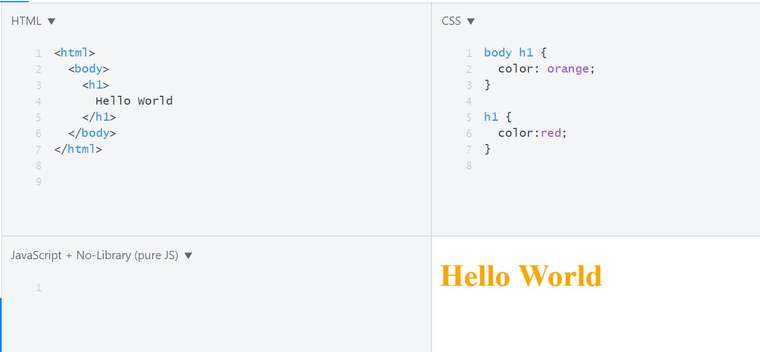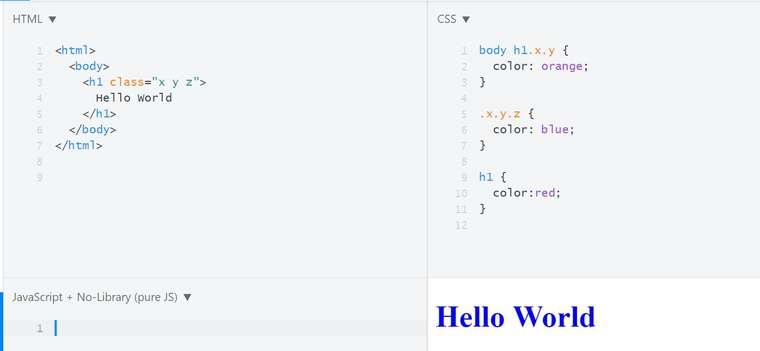According to many surveys, javascript is the most popular and used language in the software world. Javascript is ubiquitous, we can use javascript from front end development to machine learning, IOT and blockchain. In this post, I have added a list of topics in javascript/ web development that is important to cover while learning javascript. Feel free add the missed once in the list in the comment section 😀😀 for others to know.
-
Basics
HTML - https://www.youtube.com/watch?v=kDyJN7qQETA
CSS - https://www.youtube.com/watch?v=yfoY53QXEnI
Javascript - https://www.youtube.com/watch?v=PkZNo7MFNFg
JQuery (Optional) -
Learn a CSS Preprocessors - This will make css development much simpler with features like variables, mixins, modules and functions.
ex: sass, less, stylus (sass is the most popular - https://www.youtube.com/watch?v=roywYSEPSvc) -
Learn to use a CSS Library
ex - Bootstrap, MatrializeCSS, Foundation, Bulma are the most popular CSS Libraries.
Bootstrap : https://www.youtube.com/watch?v=5GcQtLDGXy8
Materialise : https://www.youtube.com/playlist?list=PL4cUxeGkcC9gGrbtvASEZSlFEYBnPkmff -
Learn to work with a transpiler (new version of javascript contain lots of cool feature, but not every browser supports those features, so you need a transpiler to compile new js into old js)
ex - typescript, babel -
Learn a JS Framework
ex - React/ Angular/ Vue are the most popular.
Angular - https://www.youtube.com/playlist?list=PLYxzS__5yYQlqCmHqDyW3yo5V79C7eaTe
React - https://www.youtube.com/playlist?list=PLYxzS__5yYQmD7FV1YYz9UxPyGTNsFObp -
Learn to use a package manager
ex - npm or yarn (npm - https://www.youtube.com/watch?v=jHDhaSSKmB0) -
Learn to use a testing framework
ex - mocha and chai, jest, jasmine and karma (jest - https://www.youtube.com/watch?v=7r4xVDI2vho) -
Learn functional style of programming (javascript is a very good language for functional style of programming with native and library support)
functionaljs - https://www.youtube.com/playlist?list=PL0zVEGEvSaeEd9hlmCXrk5yUyqUag-n84
ex libraries - rambda.js or lodash (rambda - https://www.youtube.com/playlist?list=PLrhzvIcii6GMeyUfpn-o5xVCH3_UykrzI) -
Learn to use node.js (node.js is an environment which will allow you to write js for the server site)
ex - https://www.youtube.com/playlist?list=PL4cUxeGkcC9gcy9lrvMJ75z9maRw4byYp -
Learn a node.js web framework (express, koa)
ex - https://www.youtube.com/watch?v=gnsO8-xJ8rs
Optional things (Good to know)
-
Learn to use a module bundler (this will bundle your files into one file which will improve the performance of your site)
ex - webpack, rollup or parcel. (webpack is the most popular - https://www.youtube.com/watch?v=lziuNMk_8eQ) -
Learn to use a task runner
ex - Gulp, Grunt or npm scripts (gulp - https://www.youtube.com/watch?v=1rw9MfIleEg) -
Use a scalfolding tool or a project generator (this will allow you to create different types of projects and generate boilerplate code)
ex - yoeman (https://www.youtube.com/playlist?list=PLpP9FLMkNf54AFwvRgYb8KMbKCaqqopsl) -
Web Assembly (for compute intensive functions)
-
Progressive Web Apps or Hybrid Development (Ionic, Native Scripts, React Native)
pwa - https://www.youtube.com/playlist?list=PLNYkxOF6rcIAdnzEsWkg0KpMn2WJwMBmN
ionic - https://www.youtube.com/playlist?list=PLYxzS__5yYQljbuGjaeugpqs9U07gS5P5
react native - https://www.youtube.com/playlist?list=PLYxzS__5yYQlHANFLwcsSzt3elIbYTG1h -
Responsive Web Design
https://www.youtube.com/playlist?list=PL4cUxeGkcC9g9Vh9MAA-XKnfJsWZnPZFw -
web accessibility
https://www.udacity.com/course/web-accessibility--ud891 -
Learn to debug js with debuggers such as chrome dev tool.
-
GraphQL
https://www.youtube.com/playlist?list=PL4cUxeGkcC9iK6Qhn-QLcXCXPQUov1U7f -
Serverless
-
Asynchronous Programming (promises, async and await),
-
Reactive programming (rxjs)
-
State management (redux)
-
Guess.js (machine learning to improve site performance)
-
Linting -
ESlint is the best in the business and TSlint for typescript, this is useful when we want to work as a team and want to maintain some coding standard. ESlint supports some style guides to use as a template standard (airbnb/standardjs/google style guide), and also you can add your own rules as well.




